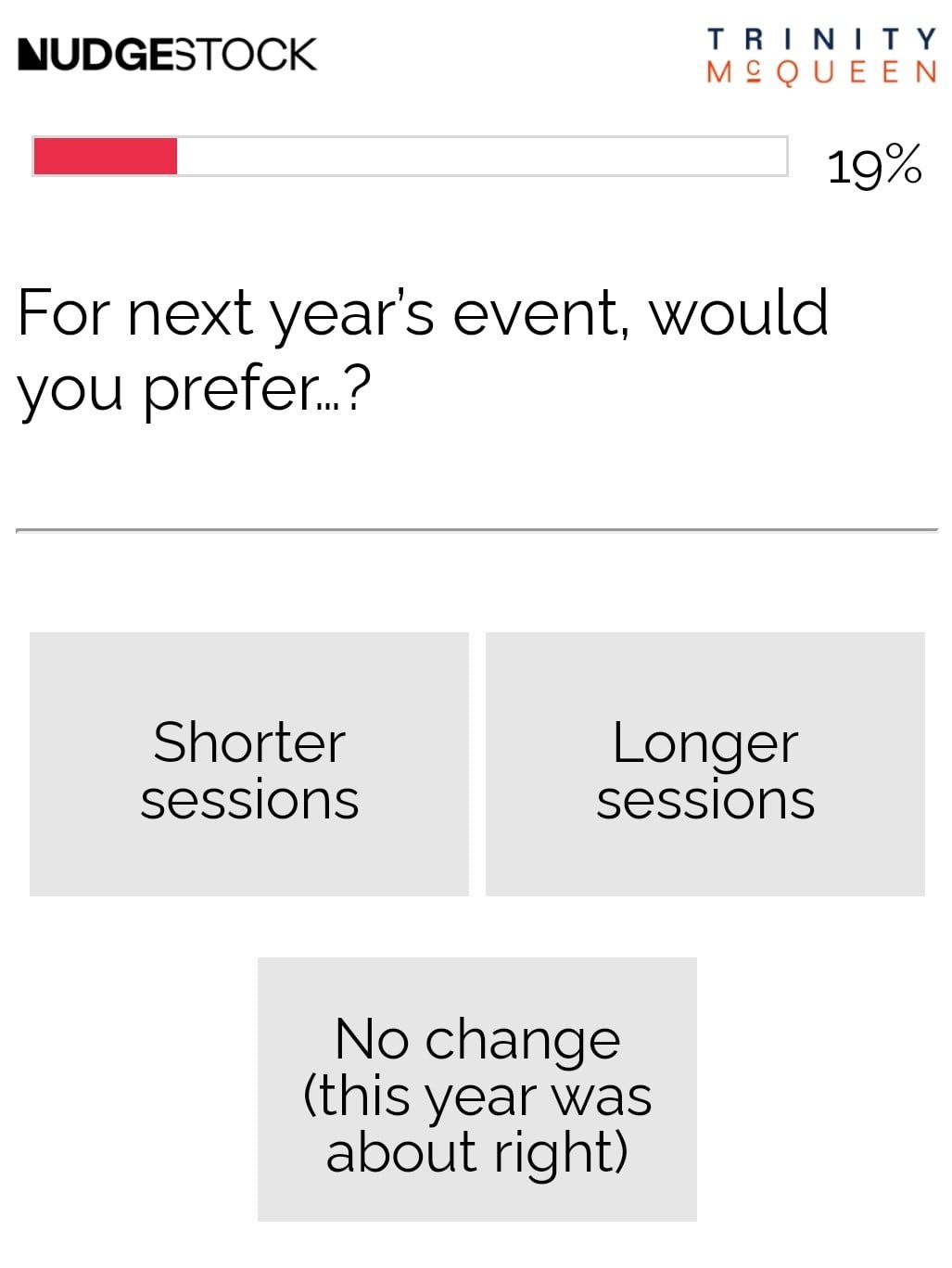In the very first episode of Nudgestock 2021 Rory Sutherland makes one important remark: ‘The best ideas nowadays don’t emerge within disciplines – they emerge at the intersections between them’.
I cannot agree more. Event Psychology that I focus on, suggests just that. It lies at the intersection between creating events for people and with people, and studying people’s behavior to provide them with best experience. When event planning and psychology meet, you’ll have the most innovative ideas for increasing attendee engagement, facilitating growth, and creating meaningful experiences.
In that first session Rory makes a great point discussing if everything is BS (behavioral science, and what did you think??). He says, no, one should not think BS is the only solution in every case. But –
“If you don’t use BS to expand the potential solution space to a problem, by adding a psychological dimension to the problem, in addition to other aspects or metrics you’re considering, then you’re missing out on a huge opportunity”.
Rory Sutherland / Nudgestock 2021
In other words, the best solution should almost always involve psychology. This statement really resonates with me. What I argue in context of events is exactly that: Event Psychology is not a tool that magically solves all of your event planning problems. Yet, it is an effective tool that can simplify many aspects of the event planner’s job, and improve the quality of events without requiring a huge investment.
Rory provides one terrific example. The engineers have created solar panels, a major achievement and great solution, but the problem of getting people to adopt solar panels has not been solved (and cannot be solved without an understanding of how people make decisions). In the events language: you might have figured out the best safety measures for your in-person event. Or, you might have gone above and beyond with various activities to boost engagement at your virtual event. But have you thought about how you are going to make people follow your safety rules or use the features you intended for better engagement?
On to more Nudgestock takeaways specifically for eventprofs ⬇️

1.Design transitions or breaks between sessions as carefully as you design the rest of the agenda.
If you focus on sessions only or mostly, you’re missing out on engagement. The inter-session moments are probably the most important part of engagement. In sessions, we tend to focus on learning first. Our experiences right before that can prime our brain to perceive the following experience in a particular way, which, therefore, has a huge impact on the outcomes. Whenever something relevant, interesting, or amusing occurs before such learning, it sets expectations and makes it more memorable through positive emotions such as laughter and surprise.

2. Use the dialogue format for sessions as well as transitions.
For sessions, you can alternate between offering a dialogue between speakers, a dialogue between a speaker and moderator, and of course a dialogue between speakers and the audience.
Now, to avoid boring Q&A, add some fun challenge. Take a Nudgestock session with Dan Ariely and Rory Sutherland (both brilliant experts and engaging speakers) for inspiration. Instead of relying on questions that the audience may ask during the session, the organisers collected participants’ questions in advance which were then answered in real time creating an interesting challenge for the speakers and an enjoyable experience for the audience. I urge you to watch it and take notes (plus, you can learn about the best question to ask on Tinder ? and whatnot).
For transitions, creating a dialogue means having at least two moderators. This certainly ensures a more engaging experience and reduces the possibility of going silent if AV or connection problems occur. At Nudgestock, there were two moderators in a studio and another one joining virtually.
3. Find a moderator whose background is in the field of your event.
In this regard, Nudgestock 2021 is a fantastic example. It was the moderator Tara Austin (who is also a behavioral strategist) who stepped in when one of the speakers’ connections went down during the livestream. She didn’t present the whole rest of the session, but she definitely saved the moment and made it the highlight of the event (P.S. not every problem at an event is a failure)! It hardly would have been possible if she weren’t a BS expert. You can watch this moment on approx 3 hr 05 min.

4. Make your audience part of the process and show them that they matter.
The Nudgestock organisers asked their 45 000+ attendees to come up with BS solutions for a nano-salad product. Not only was it an opportunity to practice your BS skills. This was an opportunity to see the community effort at work, be featured live (best suggestions were talked about live), and provide a solution to a higher-level problem (help people eat healthier!).

5. Give your attendees the opportunity to learn and be inspired after the event.
One common and obvious way of doing that is by providing replays, but also note how Nudgestock organisers break down the livestream, clearly labeling the content to make it easier to find and access. An ebook is another way to create evergreen content. Last year, Irina Graf did the same for Eventprofstalk, and Nudgestock partners also went for it:

6. Use your post-event survey wisely.
The Nudgestock 2021 survey deserves its own post. Considering that it is from behavioral science experts, I wouldn’t expect it to be any less wonderful. Two highlights:
– if you are asking for suggestions regarding the event, be as specific as possible:



– find out more about your audience’s interests within the field of your event by asking them how they feel about other events in that field. Very smart.




